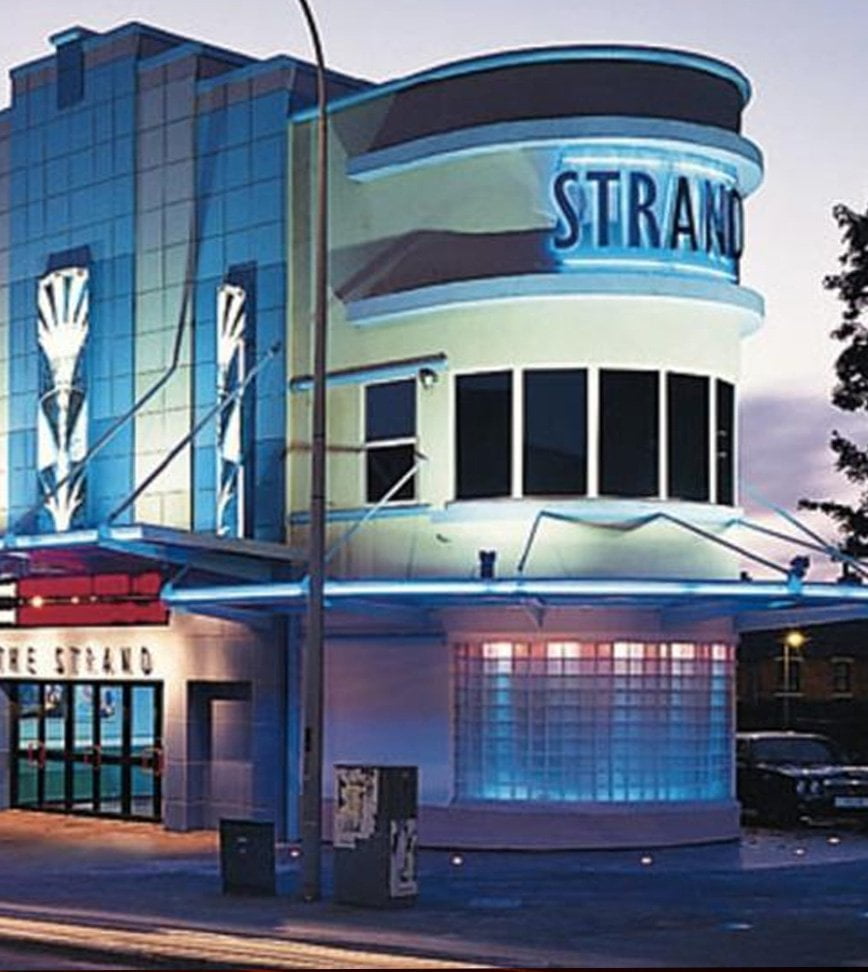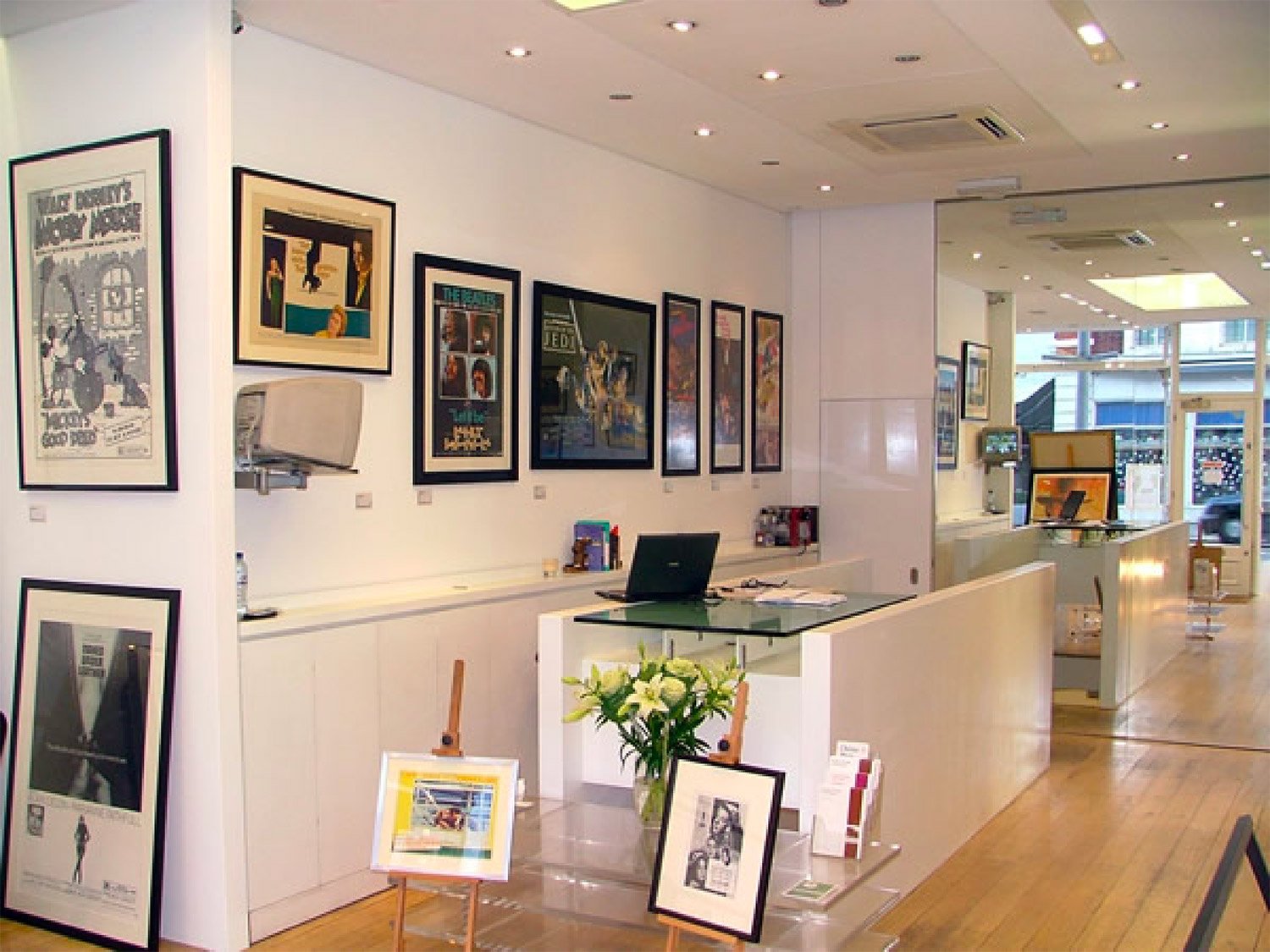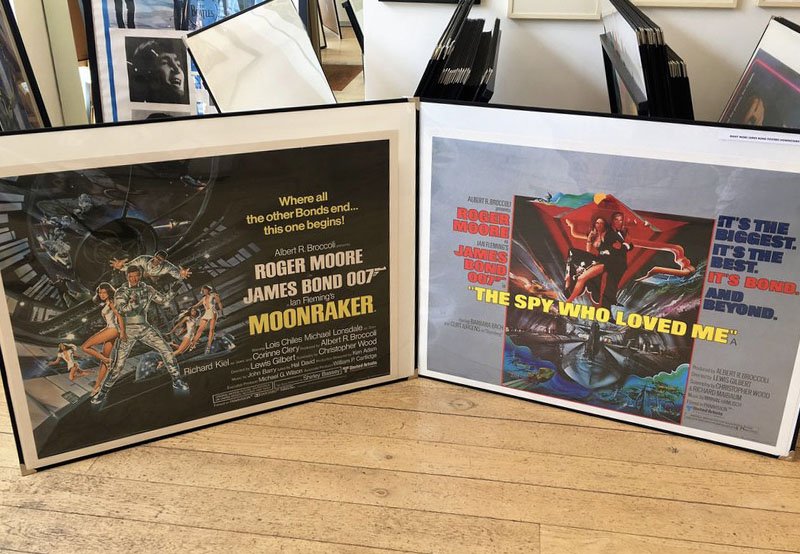New to movie art?
An introduction to original vintage film posters
A Brief History
Cinema has now been with us for well over a hundred years. But in its early days it was often seen as a passing fad – cheap entertainment for the masses, commercial and without any artistic merit or pretensions. Films themselves were designed to be disposable – prints to be watched at nickelodeons for a week or so, until the arrival of the following week’s fare.
Advertising materials are also intended to be ephemeral – designed for immediate impact and intended to encourage consumers to buy something or to do something.
Cinema advertising is no different, and was never intended to be kept in its own right.
Posters and other paper promotional materials have been part and parcel of the motion picture industry since its earliest days, and were the main way of getting viewers into the picture house in the days before radio, television or online.
The ways in which the advertising campaign’s basic aim was accomplished have varied over the years – by era, by fashion, by country, by poster artist and even by film studio – but its purpose has always been the same – to entice audiences into the cinema.

Who Buys Original Film Posters?
It’s no longer only “collectors” who are interested in film and cinema artwork such as posters and lobby cards. More and more people are now deciding to buy an original film poster rather than, say, a watercolour or a modern print.
There are of course long term collectors, who collect mainly by star, director, or genre, and who want to build up sets. There are film buffs who may be looking for a permanent reminder of a favourite film. And there are many people who are less avid film fans, but who buy an original poster or lobby card for the art and image itself. Sometimes it’s because of feelings or memories associated with the film or the star. And sometimes it’s just for the aesthetic pleasure that the art brings.
The original film poster or lobby card, originally created to be displayed outside a cinema or inside (in the theatre’s lobby) has become a popular alternative choice of decoration for home or office display (to say nothing of their appearance as stunning wall displays in restaurants, bars and other public places). Some people have even chosen to buy original posters as a potential investment, and over the last thirty years many titles have increased considerably in value. For example, twenty years ago you could still buy an original UK Quad poster for an early James Bond film for a few hundred pounds. Today, it will probably cost you up to ten times that amount.

What makes a poster collectable?
It has always been our firm belief – and our advice to clients – that when looking at movie art, you should buy what you like, and shouldn’t be too influenced by other people, or trends, or even investment considerations. But we are – understandably – frequently asked what makes a poster collectable, or particularly desirable, or expensive/valuable?
There is no one answer to this question. But we believe that there are a number of factors to take into account, and that – usually – the more of these that can be found in a particular poster or other piece of cinema art, the more likely it is to be “collectable” or to command a premium price. The condition of a poster will also affect its value, often very considerably. Please see “Condition: How we grade”. As well as condition, these are the main factors which we believe together contribute to collectability and value:
The Title
The list of recognised classics and popular titles continues to grow. Although films go in and out of vogue, some are always popular. There are too many to list, but as examples, think of Metropolis, City Lights, Gone With the Wind, Casablanca, Citizen Kane or It’s a Wonderful Life. And modern classics too, such as Tarantino’s Pulp Fiction or the James Bond 007 and Star Wars franchises.
The Star
“What makes a star?” is another question with no clear answer. But for whatever reason, stars exist, and then certain stars transcend their own time, and become icons. Their images on original movie art are especially attractive to many people.
Some are obvious, like Chaplin, Monroe, Hepburn, Grant and Brando. More recent actors such as Eastwood, McQueen, Caine are also tremendously popular. But then the top Box Office star of most of the 1980s – Burt Reynolds –hasn’t yet become collectable, and nor have most female stars of the last 40 years. Is Tom Cruise on the way? He’s of course a big star, but many modern posters are perhaps less interesting or artistic than in decades past. But that’s a matter of personal taste..
The Director
The same principles apply to Directors, especially those who are labelled auteurs by the film academics – think Welles, Hitchcock and Ford. And more recently, Woody Allen, Pedro Almodovar, and perhaps Tim Burton and Quentin Tarantino (though the purists might say that the latter is derivative rather than original – but the posters for his films are suitably cool, either way, and are an example of modern titles that are collectable).
Rarity
Unsurprisingly, the general rule is that the older the film, the more scarce is its surviving advertising material. Original posters from the 1950s and onwards are generally relatively easy to find.
But pre-war posters can be very hard to come by, as can materials from the war and immediate post-war years because of paper shortages and other restrictions.
And then there are films which are very popular today, that were not well received on their original release – so much less advertising material was produced. Good examples are It’s a Wonderful Life from the classic age, and more recently Withnail and I. Both these titles are now highly sought after.
Poster Artist
Sometimes a poster artist has been sufficiently talented – and given enough free rein – that his own style shines through, regardless of the film title.
Again, there are many examples from different generations and different countries, but here are a few of the more well known ones to look out for.
From the US, the renowned graphic artist, Saul Bass, the classic American caricaturist, Al Hirschfeld and the Romanian born Jacques Kapralik. (Some commentators think that Drew Struzan is the only worthwhile poster artist from the last 50 years – we disagree.)
From Italy, Ercole Brini and Enzo Nistri. From Sweden, Gosta Aberg. And from Poland, Wiktor Gorka and Waldemar Swierzy.
These latter Polish poster artists, and others from elsewhere in Eastern Europe, have often produced some of the most imaginative artwork, since up until quite recently they often only had the title of the film with which to work. They didn’t see the US or British advertising materials, or the film itself, before producing their poster artwork.
The Image Itself
Many beautiful and interesting posters can be found for films which no-one remembers, and featuring stars that no-one has ever heard of.
American “B” movies of the 1940s and 1950s provide countless examples, as do 1960s posters, which often seem to reflect the art and style of that decade rather than the films themselves.
Similarly, foreign posters often have superior artwork, and French and Italian poster artists in particular often worked in watercolours, producing a very different type of poster to the more familiar US or UK images.
Many – though by no means all – modern US and UK posters consist mainly of photographic representations from the film, or of the stars. They can still be popular, but the aesthetics of the image often compare unfavourably with posters from earlier generations.
Fashion and Trends
Like any other industry or art form, poster values and collectability are influenced by the whim of current vogues. Film posters also go in and out of fashion.
Some titles seem perennially popular, for example, Breakfast at Tiffany’s, The Godfather, Blow-Up, Bullitt, any of the Bond titles, Chinatown, Jaws and Cool-Hand Luke, to name a few.
Who knows what will be the next generation of heavily sought after titles? Will it include Downhill Racer as people look to combine original movie art with their favourite winter pastime, ski-ing, Performance, The Wall or other rock/music related titles, and 1990s and later feel good titles like Four Weddings and a Funeral, Love Actually and Bridget Jones?





